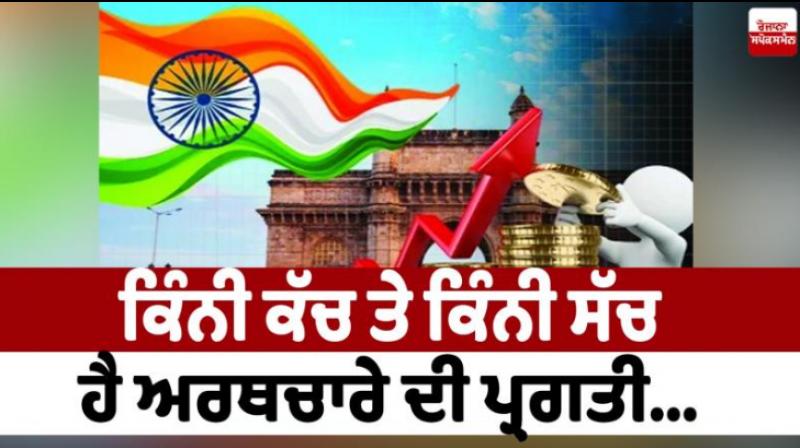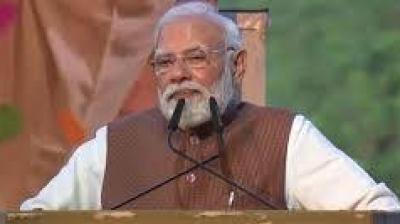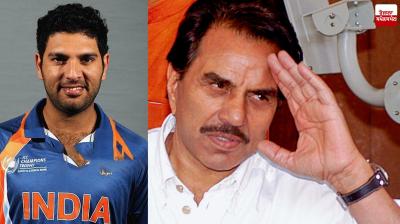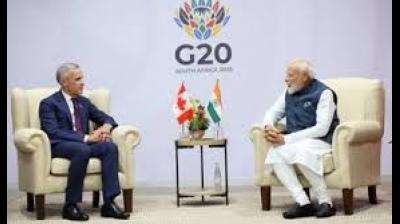
Preparations are already underway to turn India’s third rank in the economy into a major campaign issue for the 2029 elections.
Editorial: How Much Is Illusion and How Much Is Reality in Economic Progress...
India becoming the world’s fourth largest economy is comforting news. However, the discomforting aspect of this status is that compared to the top two—America and China—India’s total economic value is still significantly lower. This implies that India’s economic influence is not yet strong enough to make a notable impact on international platforms.
On Sunday, the CEO of NITI Aayog, BVR Subrahmanyam, told the media that India has become a 4 trillion dollar economy. He stated that India has overtaken Japan in terms of economic strength to reach the fourth position. Earlier, it was estimated that our country would have to wait until December 2025 to achieve this milestone, but in the last quarter (January-March) of the financial year 2024-25, the strong performance of the economy brought about a dramatic change in India’s GDP.
It exceeded the estimated 6.6% growth and reached 6.9%, due to which our country became a 4.19 trillion dollar economy, surpassing Japan’s 4.18 trillion dollar economy.
The economies of the United States and China, apart from aligning with their geographical expanse, are respectively 30.5 trillion and 19.23 trillion dollars. Reaching that level would still be impossible for India even in the next 20 years.
However, surpassing Germany (at third position with 4.52 trillion dollars) is not a very big challenge. According to the forecasts of the International Monetary Fund (IMF), if India maintains its current growth rate, it will easily surpass Germany during the financial year 2026-27. Prime Minister Narendra Modi's government also appears firmly focused on achieving this target. Government circles admit that Mr. Modi has been making all his decisions with the 2029 elections in mind.
Preparations are already underway to turn India’s third rank in the economy into a major campaign issue for the 2029 elections. Even during the legislative assembly elections of different states before the national elections, economic progress will be prominently projected as a key achievement. Indeed, these accomplishments are not insignificant. For example, in the financial year 2013-14, our country's per capita annual income was 1,438 dollars.
During 2024-25, it reached 2,880 dollars. Therefore, the Modi government has certainly earned the chance to boast that it has doubled the per capita income in just 10 years. However, it is also true that it will take India at least two more decades to reach Germany’s per capita income, which is around 14,005 dollars. This reality will not be a part of any BJP election manifesto.
Indeed, the game of numbers, while projecting an impression of “all is well,” often hides many harsh truths. Hence, taking a proper assessment of these realities should be the primary role of economic experts. Good economists consider presenting a truthful assessment as their sacred duty. They waste no time in examining and questioning government claims. As a result, the real picture becomes visible.
The brighter side of this picture is that the agricultural sector has consistently contributed significantly to maintaining the pace of India’s economic progress in recent years. Due to the agricultural growth rate consistently remaining above 4%, the demand for consumer goods in rural areas is also continuously increasing. Similarly, the service sector’s growth rate has also remained in double digits (10 to 12%).
The progress in these two sectors has so far managed to cover up the failures of the manufacturing sector. But unless the manufacturing sector demonstrates a steady growth rate of 6 to 6.5%, there will be no possibility of reducing unemployment. Despite the Prime Minister’s calls for ‘Atmanirbhar Bharat’ and ‘Make in India,’ Indian businesses have not yet abandoned their reliance on China.
Instead of encouraging the manufacturing sector, they have continued to prioritize importing “ready-made goods” from China, even during times of national crisis. Until the government takes a firm stance against this tendency, the nation will not see any meaningful improvement in the employment sector. In such a scenario, the goal of progressing from fifth to third place in the global economy holds no meaning for every unemployed Indian.













